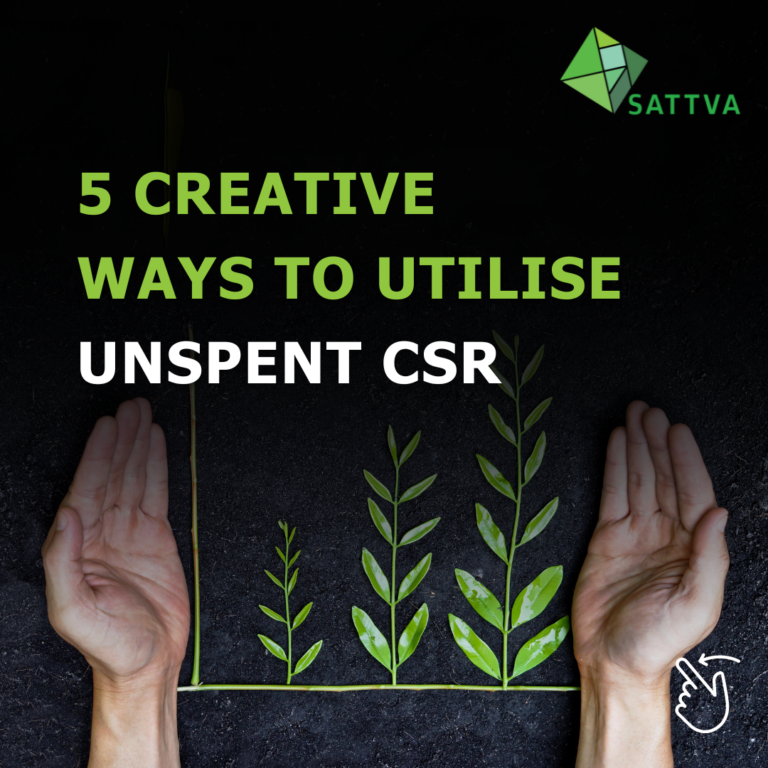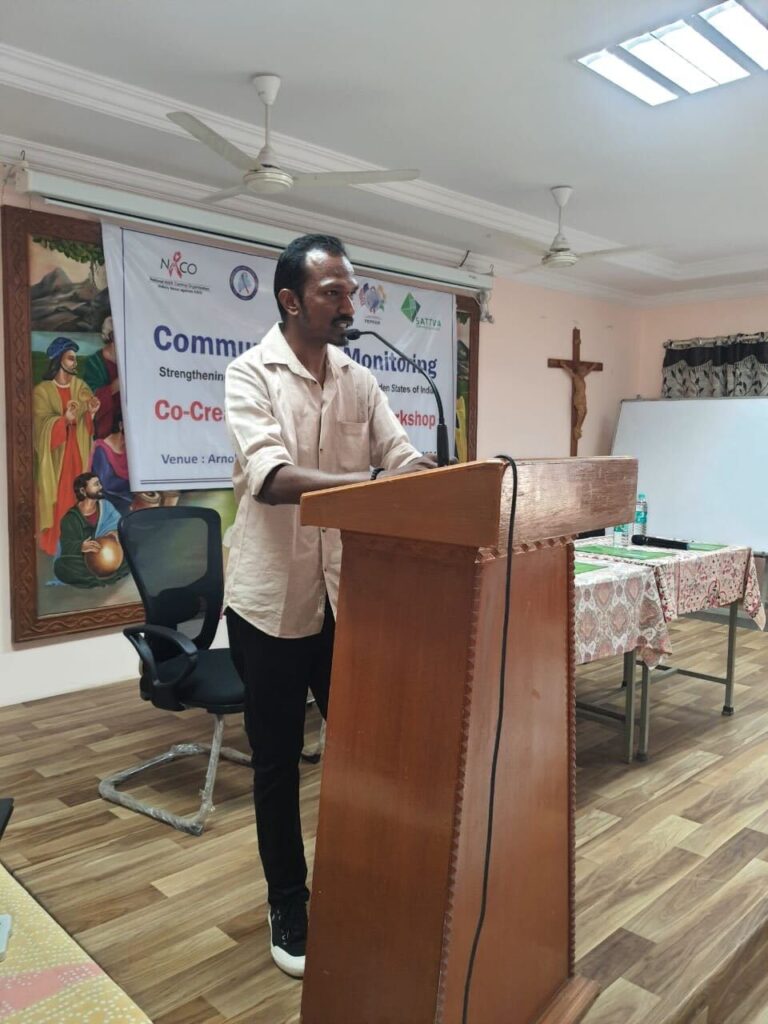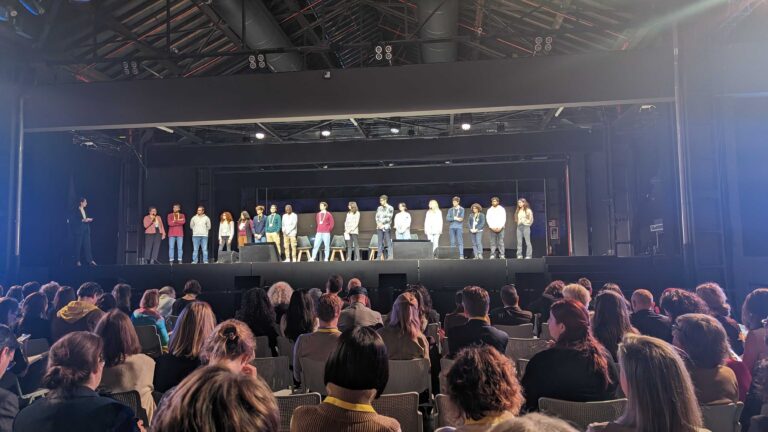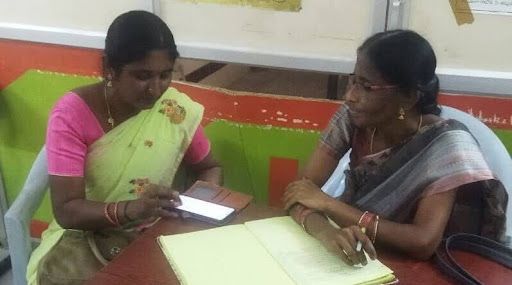The Hierarchy of Impact
Creating meaningful change requires valuing different levels of impact.
– by Rathish Balakrishnan
One of the questions I am often asked when I tell people that I work with companies on their CSR strategy and implementation is, “Do these companies really care about impact?”. At Sattva, the organisation I lead, our employees ask the same question about every customer we engage with, and every person we hire: “Are they truly committed to social impact?”. The answer is rarely black or white. Over the years, I have come to realise that it is not about whether you are committed or not but about your relationship with impact. And when it comes to impact, I have in my experience, seen three key anchors.
1. The self.
There are those of us who approach impact from an entirely personal lens. We are looking for meaning and gratification through experiences that allow us to directly engage with issues of, for instance, poverty and climate change. We engage with them in our own neighbourhood and social context, such as volunteering for social initiatives, advising organisations that are in our network, or even starting a small nonprofit on an issue of personal interest.
We are well-intentioned and find simple and effective ways to make a difference in someone’s life. We value these experiences and often translate them into stories that we tell ourselves and those around us. We don’t have a particular urgency around solving a problem for good, as long each of our actions make others’ lives better. Over time however, we might ask ourselves whether our efforts truly make any difference to those whose stories we tell.
To me, these are the people that are anchored to the self.
2. The poor
There are those of us that want to go beyond our comfort zone and work in the areas of greatest need. We feel strongly about the inequality around us and act with urgency to solve these problems. We have a strong bias for action and often want to find quick solutions that will address a specific problem and demonstrate immediate outcomes. Through a combination of data and stories from the ground, we measure whether our efforts are truly creating meaningful impact. And over time, we might become frustrated because the impact that we seek to achieve is either short-lived or distant.
Such people in my view are anchored to the poor.
3. The system
Then there are those among us who are anchored to the system. We recognise that poverty is a systemic issue and quick-fix solutions often have limited impact. We seek to shift the focus to the larger systemic challenges like improving the ability of the government to deliver better long-term outcomes, establishing ecosystem level initiatives that will move the needle across organisations, or creating a community-led model of change that is participative and sustainable.
We engage with government, aim to influence policy, and drive ecosystem level investments because we believe these efforts will create enduring change. We replace urgency for impact with indicators of progress. We are fine with the uncertainty and risk that is inherent to systems level work. However, we continue to be plagued with the question: how does it all add up in the long run?
Nowhere has this difference been more evident to me than at a strategy session I was once a part of. One of our nonprofit partners had received a mandate to work across 10 states on education, and we were discussing what its strategy should be. There were those in the room who used this opportunity to share their own personal aspirations on what they would like to work on and the districts where they would like to be. I strongly argued that this was a once in a lifetime opportunity and we should do everything in our power to improve student learning outcomes, even if some of our initiatives would be short-term. The CEO argued that he was fine not having any impact on learning outcomes for five years. He would rather go all out to demonstrate a strengthened government machinery to deliver education, which he believed would provide dramatic improvement on learning outcomes over a 10 year horizon.
Neither of us was less committed to impact than the other but we held very different positions on what we thought was the right thing to do. Since then, I have seen this play out in every discussion on a wide range of topics. I have seen it among funders trying to solve deep rooted problems with limited funding, and among nonprofit leaders on what they think is the right thing to do.
Is one anchor ‘better’ than the other?
I notice the judgements that those anchored on the poor or the system have towards those anchored on the self. I also observe the increasing shift among strategic funders towards anchoring impact conversations around the system (of course, there can be no absolutes here; just propensities that people might have when weighing choices around impact).
The most effective philanthropists and practitioners I have worked with, recognise these anchors in themselves and those they work with; and they switch between these anchors based on the problem at hand, rather than maintaining a constant disposition towards any one anchor.
I have always believed that social problems are complex and we need as many hands and resources on the deck as possible. Collaboration is hard, and I strongly believe it is because we come at the problem from such different places. So, I have been mindful to watch out for my own biases—imandari ka ghamand, to borrow from the film, Newton—when I engage with those that come with the intent to create impact. I also observe that the stakeholders with different anchors use different vocabularies to discuss social issues and solutions. I have now learnt to adapt my vocabulary when interacting with stakeholders with different anchors.
Our anchors and those of our stakeholders have a fundamental impact on whom we engage with and how we collaborate. Therefore, it might be useful to consider them when making decisions about, for instance, pursuing funding opportunities or hiring.
If you are a nonprofit, you might ask yourself: what type of funder am I looking for and do I have the right opportunities for donors who have different anchors?
If you are a funder, you might question whether your biases are clearly stated to your team and grantees. Are you looking to create a balanced portfolio or anchor yourself strongly on one?
If you are organisation looking to hire, what type of person are you looking for? Are you for instance open to hiring a person strongly anchored on self but with the relevant skills? And, as an organisations looking to collaborate, are you looking for partners that have the same anchors as you? Or are you looking to complement your focus with those that might have different anchors?
To end with the question we posed at the beginning: do companies really care about impact? In our experience, a large number of companies (and high net-worth individuals) are distributed between the anchor to the self and to the poor, with few being anchored to the system. But we are also excited to see companies consciously making early efforts to shift across these three anchors. For instance, one of our CSR customers is shifting from writing a cheque to relief funds to establishing a portfolio across water, livelihoods and disability, over the next two years. They recently signed an MoU with a reputed academic institution to setup an incubator focused on helping scale innovative solutions on women empowerment.
I would wager that in the next 10 years, some of the most strategic funders in our ecosystem will be companies’ CSR departments. To accelerate this shift, we need partners—not naysayers or cynics—who can keep their judgements aside and work with diverse stakeholders. The choice, as always, is ours.
——————————————————————-
Rathish Balakrishnan is the Co-founder and Managing Partner at Sattva. Rathish has extensive experience in conceptualising and implementing strategic large-scale solutions in social impact sector. He has contributed significantly at governmental policy level in education and skill development. Rathish has also spent a decade working at SAP across their engineering, product management and corporate strategy divisions. He is a graduate from BITS Pilani.
This article was originally published in IDR Online.
Sattva has been working with various nonprofits and social organisations as well as corporate clients to help them define their social impact goals. Our focus is to solve critical problems and find scalable solutions. We assist organisations in formulating their long-term social impact strategy by strategically aligning with business to provide meaningful solutions to social issues.
● Talk to us: impact@sattva.co.in





